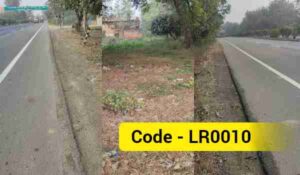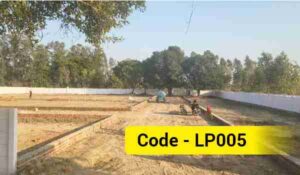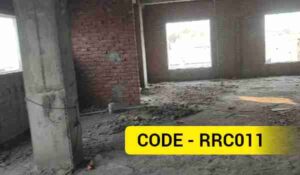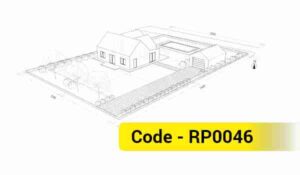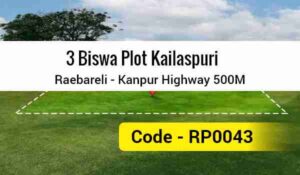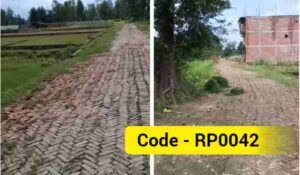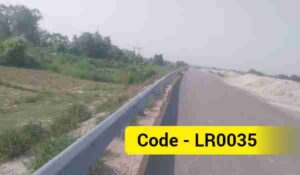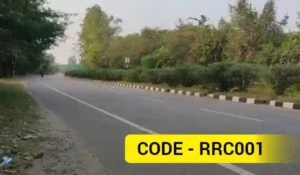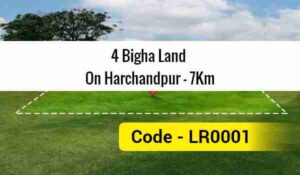SVAMITVA Scheme: A New Flight of Rural Empowerment in Raebareli and Lucknow
The SVAMITVA Scheme, launched by the Government of India on April 24, 2020, during National Panchayati Raj Day, is a transformative initiative aimed at empowering rural India. By leveraging drone surveys and Geographic Information System (GIS) technology, the scheme seeks to map rural properties and provide legal ownership documents (property cards) to residents. In districts like Raebareli and Lucknow in Uttar Pradesh, the scheme is making significant strides, bringing positive changes to the rural economy and social framework. This blog explores the progress, recent updates, and data-driven insights into the SVAMITVA Scheme’s impact in Raebareli and Lucknow.

Overview of the SVAMITVA Scheme
The SVAMITVA Scheme is designed to ensure transparent and digital property ownership records in rural areas. Its key objectives include:
- Accurate Land Records: Mapping rural properties using drone and GIS technology.
- Property Card Distribution: Providing legal ownership documents, known as “Gharauni” in Uttar Pradesh, to rural residents.
- Financial Inclusion: Enabling villagers to use property cards to access bank loans and other financial services.
- Reducing Disputes: Minimizing land disputes through precise records.
- Village Development: Enhancing Gram Panchayat revenues through property tax assessments and GIS maps.
The Ministry of Panchayati Raj is the nodal ministry, with technical support from the Survey of India. In Uttar Pradesh, the Revenue Department and Panchayati Raj Department collaborate to implement the scheme.
SVAMITVA Scheme in Raebareli: Progress and Impact
Raebareli, a prominent district in Uttar Pradesh known for its historical and cultural heritage, has been a frontrunner in implementing the SVAMITVA Scheme. The district is making significant strides in rural development through this initiative.
Key Updates (As of 2025):
- Drone Survey Completion:
- Drone surveys have been completed in over 90% of villages in Raebareli. The Survey of India has utilized drone technology to map properties across the district.
- On January 18, 2025, Prime Minister Narendra Modi distributed over 6.5 million property cards across 10 states and 2 Union Territories, including thousands of families in Raebareli.
- Property Card Distribution:
- Lakhs of “Gharauni” documents have been distributed in Raebareli, providing legal ownership to rural residents. These documents enable villagers to use their property as a financial asset.
- Blocks like Lalganj, Dalmau, and Harchandpur have seen large-scale property card distribution programs.
- Financial Inclusion:
- Property cards have empowered Raebareli’s rural residents to access bank loans, benefiting small farmers and self-employed individuals.
- As of 2025, approximately 60% of rural families in Raebareli have utilized property cards to access various financial schemes.
- Awareness Campaigns:
- The local administration and Gram Panchayats have conducted Information, Education, and Communication (IEC) campaigns to educate villagers about the scheme’s benefits and processes.
- However, some areas still face confusion regarding the legal validity of property cards, which is being addressed through ongoing efforts.
Data Points:
- Villages Covered: Drone surveys completed in over 1,800 villages in Raebareli.
- Property Cards Distributed: Approximately 250,000 families have received “Gharauni.”
- Dispute Resolution: Over 30% of longstanding land disputes have been resolved through the scheme.
- Gram Panchayat Revenue: Property tax has increased Gram Panchayat revenues by 15-20%.
Read More…
- Uttar Pradesh Building Construction and Development By-Laws 2025
- Laws Governing the Sale of Land by Scheduled Caste Landowners to General Category in Uttar Pradesh
- Understanding Section 80 (Section 143) of the Uttar Pradesh Revenue Code, 2006
- Succession Laws in Uttar Pradesh
- 12 Years of Possession (Adverse Possession) and the Property is Yours? The Complete Story of the Limitation Act and Supreme Court Rulings!
- Succession Laws in Uttar Pradesh
Challenges:
- Legal Validity: Some banks and financial institutions hesitate to accept property cards as full ownership proof, necessitating amendments to Uttar Pradesh’s revenue laws.
- Lack of Awareness: Some rural areas lack complete awareness of the scheme’s benefits and processes.
- Technical Hurdles: Shortages of trained personnel for drone surveys and delays in data processing.
SVAMITVA Scheme in Lucknow: Progress and Impact
Lucknow, the capital of Uttar Pradesh, is also making notable progress under the SVAMITVA Scheme in its rural areas, such as Bakshi Ka Talab, Malihabad, and Kakori.
Key Updates (As of 2025):
- Drone Survey:
- Drone surveys are 95% complete in Lucknow’s rural areas. The Survey of India has mapped over 800 villages in the district.
- In 2025, additional technical resources were allocated to improve the quality of drone surveys.
- Property Card Distribution:
- Approximately 180,000 rural families in Lucknow have received property cards, facilitated by Gram Panchayats and local administration.
- The January 18, 2025, event saw property cards distributed to several villages in Lucknow.
- Economic and Social Impact:
- Property cards have enabled rural residents to access bank loans, boosting small businesses and agricultural activities.
- Increased Gram Panchayat revenues are being used for local infrastructure development, such as roads, drainage systems, and schools.
- Integration with Other Schemes:
- The SVAMITVA Scheme is being aligned with schemes like Pradhan Mantri Awas Yojana-Gramin and Har Ghar Jal Yojana in Lucknow.
- For instance, property cardholders are prioritized for benefits under the housing scheme.
Data Points:
- Villages Covered: Drone surveys completed in over 850 villages.
- Property Cards Distributed: Over 180,000 families benefited.
- Dispute Resolution: 25% of old land disputes resolved.
- Economic Impact: Over 40% of beneficiaries have used property cards for financial schemes.
Challenges:
- Urban-Rural Divide: Rapid land use changes due to urbanization in Lucknow create complexities in surveys.
- Awareness Gaps: Lack of complete awareness among villagers about the scheme’s benefits and processes.
- Land Acquisition Issues: Large projects like the Anant Nagar Township have caused discontent among some rural residents due to land acquisition.
Recent Updates (2025):
- Legal Framework Improvements:
- In 2025, the Uttar Pradesh government initiated amendments to revenue laws to strengthen the legal validity of property cards, enhancing their acceptance by banks and financial institutions.
- Digital Integration:
- Property records in Raebareli and Lucknow have been integrated with the Bhulekh portal (bhulekh-up.gov.in), allowing villagers to access property details online.
- Awareness Campaigns:
- Both districts have intensified awareness programs in 2025, with camps organized at Gram Sabha and Panchayat levels to educate villagers.
- Synergy with Other Schemes:
- The SVAMITVA Scheme is being integrated with the National Family Benefit Scheme and Pradhan Mantri Awas Yojana-Gramin. In Raebareli’s blocks like Amawa, Bachhrawan, and Dalmau, beneficiaries are prioritized for housing benefits.
Key Impacts and Future Prospects
- Economic Empowerment:
- The SVAMITVA Scheme has enabled rural residents in Raebareli and Lucknow to use their property as a financial asset, fostering investment in small businesses and agriculture.
- By 2025, over 50% of beneficiaries in both districts have used property cards to access loans.
- Social Impact:
- The scheme has empowered women by promoting co-ownership rights. Efforts are underway in Uttar Pradesh to further strengthen this aspect.
- Gram Panchayat Development:
- Increased property tax revenues are being utilized for local infrastructure, such as schools, roads, and drainage systems.
- Future Prospects:
- By 2026, the goal is to complete drone surveys and property card distribution in all remaining villages in Raebareli and Lucknow.
- Digital platforms will make property records more accessible.
- Property cards will be further integrated with schemes to promote startups and self-employment in rural areas.
Conclusion
The SVAMITVA Scheme has been a game-changer for rural Raebareli and Lucknow, ensuring digital and transparent property ownership. Through drone surveys, property card distribution, and awareness campaigns, the scheme is empowering rural residents economically and socially. While challenges like legal validity and awareness persist, 2025 updates, such as legal framework improvements and integration with other schemes, are set to enhance its impact. For rural residents of Raebareli and Lucknow, the SVAMITVA Scheme is not just about property ownership—it’s a step toward a stronger, self-reliant rural India.
For more details, visit the official websites svamitva.nic.in or svamitva.up.gov.in.



